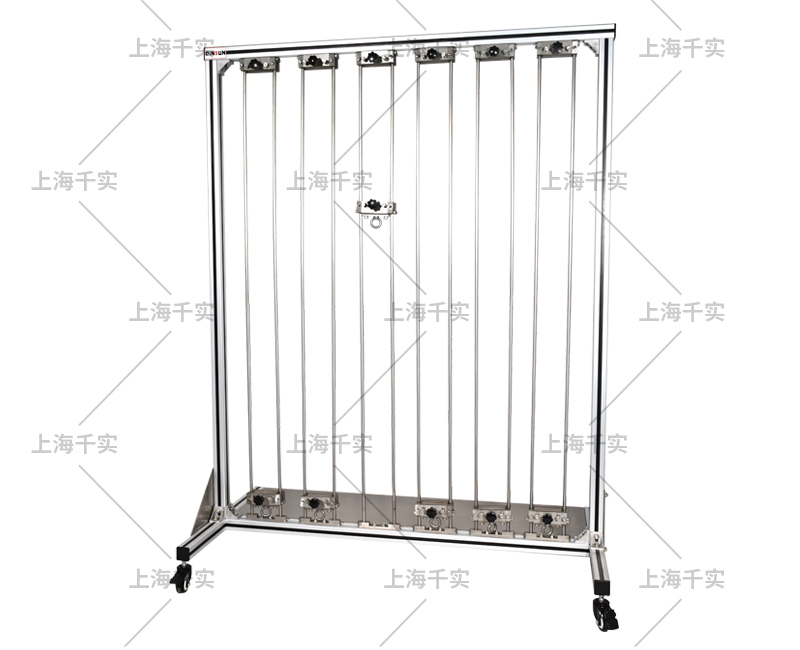
NewsInformation Center
Test procedure of fabric deformation rate tester
2021/05/31
The fabric deformation rate tester is mainly used to test the elongation and deformation rate of stretch yarns or textile fabrics made of stretch yarns under fixed load conditions to evaluate their static tensile properties.

Applicable standards:

Applicable standards:
ASTM/D 3107-2007
testing method:
1. Constant force value method:
The upper end of a certain specification sample is clamped in the upper fixture, a weight of a certain weight is hung below, and the recovery performance of the sample is tested after loading 4 times.
2. Fixed length method:
Clamp the upper and lower ends of a certain specification sample in the upper and lower clamps, move the lower clamp to stretch the sample for a certain length, and then measure the recovery performance of the sample after holding it for a certain period of time.
Technical Parameters:
1, test station: 6;
2. Body material: all stainless steel design
3, holder material: aluminum alloy
4. Weight load: 3 pounds (1.35kg) or 4 pounds (1.8kg)
5, the effective clamping width of the clamp: ≥80mm
6. Gripper spacing: 0-300mm adjustable
7, the length of the weight hook: 280mm
Special configuration:
1, 1000CN hooks (including the weight of the lower gripper) 6
2, 1000CN weight 24 pcs
3, 500CN weight 6 pcs
4, aluminum alloy holder 6 pairs
main feature:
1. All stainless steel frame design, beautiful and generous;
2, it can realize the positioning test of a single station at any time, or the positioning test of 6 stations at the same time
3. The instrument is equipped with a standard stainless steel ruler (1mm scale)
4, timer (optional)
5, a variety of standard load weights optional
Test steps:
1. The gripper at the top of the machine clamps one end of the sample, and a certain initial load is applied to the other end with a heavy weight, and the sample is marked with two distances from the lower end of the gripper;
2. Then apply the specified weight to the sample, wait for 1 hour or a specified time, and then measure the distance between the two marks;
3. Remove the weight, apply the initial weight after 30 seconds or 1 hour or other specified time, and measure the distance between the two marks again;
4. Then calculate the tensile elastic recovery rate (%) and residual deformation rate (%) of the sample through a special formula.
For more information, please visit us at: https://www.qinsun-lab.com/index.html
Or write email to us at: info@qinsun-lab.com
For more information, please visit us at: https://www.qinsun-lab.com/index.html
Or write email to us at: info@qinsun-lab.com
Previous: What is the definition of oxygen index
N e x t : Switzerland develops a quantum sensor that can accurately measure the frequency



